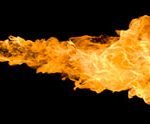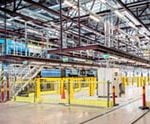The growing evidence base about dust
For decades, research has shown that long-term exposure to dust in the construction area has life-threatening consequences. However, this doesn’t mean that we know the whole story. As research advances, industry professionals are gaining deeper insights into the hazards of working in dusty environments. Recent studies suggest that the health risks associated with dusty work sites in the construction industry may be more severe than previously understood. Ensuring a safe work environment is crucial not only for the well-being of construction workers but also for safeguarding productivity. Adopting best practices in dust management and safety protocols is vital to protect workers’ health and maintain efficient operations.
Inhaling small amounts of dust over a long period can cause lung cancer, chronic obstructive pulmonary disease (COPD), silicosis, asbestosis and asthma. Symptoms often appear many years after exposure, so the links between cause and effect are not always obvious. Recent research has examined data sets spanning longer time periods, so they have been able to get a better understanding of the full impact of exposure to construction dusts.
New findings about chronic obstructive pulmonary disease
A lot of this new research has focused on COPD. COPD is a chronic disease that obstructs airflow. In 2010, the World Health Organization identified it as the third leading cause of death worldwide (1). Apart from smoking, workplace exposure to dust is the biggest driver of COPD, with one survey calculating that 14% of cases are attributable to occupational exposure (2). Other research has recommended that legislation needs to be reevaluated to make sure that workers are kept safe (3).
You should note that this research is only about COPD – exposure to dust in the building industry is linked to several other medical conditions. The impact is so profound that the UK government recently stated that construction workers have historically, “been at greater risk of developing cancer from their work than any other industry group”(4).
Why is construction so dangerous?
In some work environments, it’s obvious which activities produce dust, so maintaining a safe workplace can be relatively straightforward. It’s a more complicated story in the building industry. Construction involves multiple simultaneous processes, releasing hazardous particles from various sources. The numerous tasks that lead to dust exposure make it difficult to maintain a safe working environment.

If you have a dust problem – Dustcontrol have an extraction solution
For example, working with materials such as concrete, stone and masonry can expose workers to crystalline silica dust. Cutting, drilling, grinding, or sanding these materials is likely to release particles into the air, and exposure to silica dust is associated with conditions like silicosis, lung cancer, and other respiratory diseases.
Woodworking tasks, including cutting, sanding, or sawing wood, can also produce harmful dust. Because wood is a natural material, you might think that wood dust is fairly harmless, but this isn’t the case. Some woods are toxic in themselves, but all wood dusts have the potential to cause asthma and allergic reactions. On top of that, wood often contains bacteria, mold and fungi which can lead to further health complications.
It’s a similar story for metal: cutting and grinding generates dust can cause respiratory irritation and long-term health effects. Abrasive blasting can throw a wide variety of toxic substances into the air too, and of course any type of drilling is likely to create dust.
Then there’s smaller tasks that are easy to overlook but that can still contribute to an unhealthy environment. Chasing concrete and sweeping up debris might seem like innocuous tasks, but they still cause particles to be lifted into the atmosphere.

How to tackle dust exposure in the construction area
Prolonged exposure to even a small amount of dust can lead to severe health problems and there is a wide range of dust sources in the building industry, so it’s important to take a thorough approach to controlling dust.
A portable solution is essential in construction, and Dustcontrol offers a range of powerful, mobile machinery. Many of Dustcontrol’s extractors, like the DC 2900, serve dual purposes for vacuum cleaning and source extraction around tools like power tools and table saws. For broader environmental dust control, powerful air cleaners such as the Aircube 1200 complement these systems.
Highest level of protection by HEPA filters
HEPA (High Efficiency Particulate Air) filters are a vital component in almost all dust extraction solutions. These are highly effective filters that are certified to capture above a specified amount of dust and particles (in the US, an air filter must capture 99.97% of particles 0.3 microns or larger to be certified as a HEPA filter). All Dustcontrol’s HEPA filters are supplied with individual test certificates, batch serial numbers, and manufacture date. We do this to ensure that employers can give their workers the highest level of protection and fulfil their legal obligations.
Dustcontrol – A team of problem-solvers
Above all, Dustcontrol is a team of problem-solvers. We’re experts at creating customized solutions that protect workers from injury and illness and ensure that building sites are safe, efficient and lawful. With the complex nature of dust extraction in the construction industry, we recommend that you contact us so we can come up with a solution that meets the unique needs of your operation.
Contact:
Contact us to find out more about our solutions Here
And if you need an assessment of the air in your workplace contact any of our experts Here
More Reading:
1. (https://www.who.int/news-room/fact-sheets/detail/the-top-10-causes-of-death).
2. (https://www.thieme-connect.de/products/ejournals/abstract/10.1055/s-0043-1766117)
3. (https://www.sciencedirect.com/science/article/pii/S0013935121010331?ref=cra_js_challenge&fr=RR-1)
4. (https://www.hse.gov.uk/construction/healthrisks/cancer-and-construction/index.htm)








































































